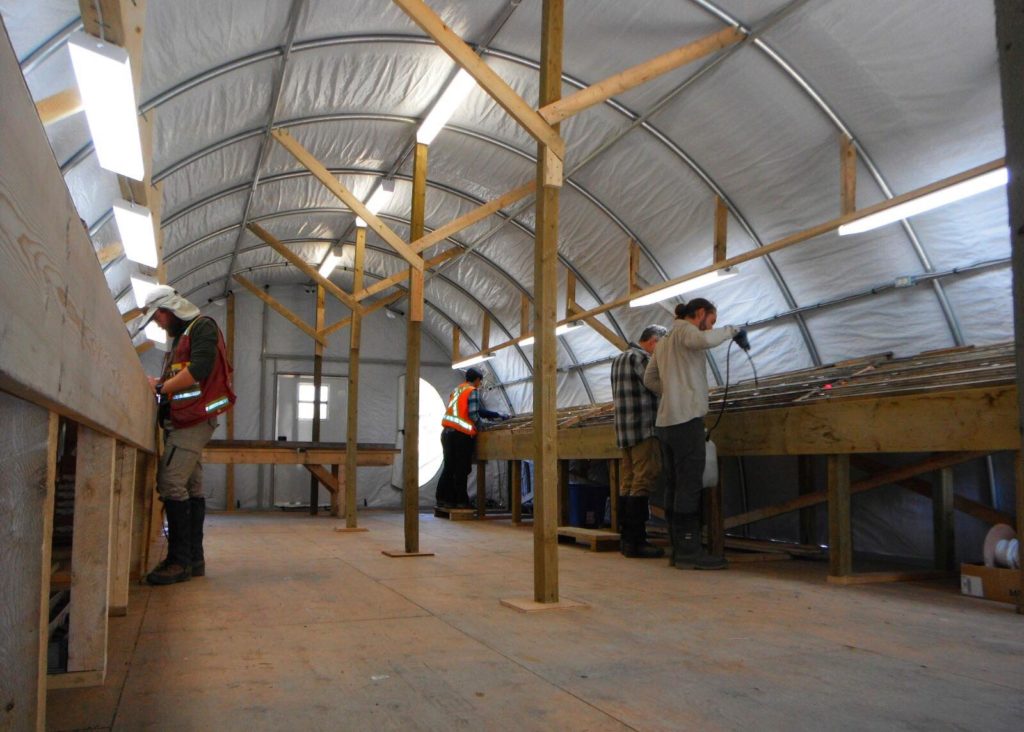X-ray fluorescence (XRF) ore sorting technology has found another fan after Fireweed Zinc reported positive results from preconcentration test work at its Macmillan Pass zinc project in the Yukon of Canada.
Samples from Macmillan Pass’ Boundary Zone, a discrete bulk-tonnage, exploration target 15 km northwest of the Jason zinc-lead-silver deposit, were put through XRF, X-ray transmission, electromagnetic and dense media separation sorting tests by Canada’s Sacré-Davey Engineering at the University of British Columbia, with XRF showing the most promising results, Fireweed said.
The principal results of the 436 rock samples tested in the XRF trials included the potential to upgrade the feed grade from 2.5% Zn to 5% Zn and a rejection rate of 70-50%, with zinc recoveries ranging from 80-85%.
Fireweed pointed out that the analysis in the study assumed that 25% of the feed had fines (-12 mm) which cannot be processed in the ore sorter. As a result of this, the fines would bypass the sorter and combine with the ore sorter product, with the final grade of 5% Zn achieved after combining the ore sorter product with the fines assumed to have a grade of 2.5% Zn.
XRF sorting is currently used at over 50 operations across the world, including Hecla Mining’s San Sebastian mine, in Mexico, and Anglo American’s Mogalakwena mine, in South Africa, according to Fireweed.
Typically, it uses an XRF sensor to distinguish and measure surface metal abundances on rock pieces moving on an enclosed conveyor belt unit. The XRF readings for each individual rock are then analysed by high speed software to distinguish and flag rocks with metal values above and below a set threshold.
At the end of the conveyor belt, focused high pressure air jets or mechanical levers then separate the designated higher-grade rock pieces for processing and reject low grade and waste pieces. The amenability to ore sorting depends on the material characteristics of a deposit.
Fireweed said: “The Boundary Zone samples responded positively to XRF testing because zinc values on the surfaces of individual rock pieces correlate closely with the overall zinc assays of those rocks.”
Fireweed Zinc CEO, Brandon Macdonald, said the ore sorting results imply there is potential to improve the economics of the Macmillan Pass project.
He continued: “These results suggest that we may be able to reject 50% to 70% of low-grade and waste rock at low cost near a potential open-pit operation at Boundary with less than 15% loss of zinc mineralisation before material is transported to a central processing plant at Tom.”
Macdonald said the company has now moved the drill to Boundary to both confirm and step out from historic holes, as well as obtain a 2 t sample to confirm these ore sorting results may be obtained on a larger scale.
“If the larger test is successful, we can then incorporate the benefits of an XRF ore sorting system at Boundary into a revised preliminary economic assessment economic study along with upgraded information from recent drilling at Tom, Jason and End Zones.”
A 2018 preliminary economic assessment at Macmillan Pass showed that a 4,900 t/d operation could be constructed for an initial capital C$404 million ($305.9 million) using starter-pits on the Tom West and Jason Main zones.
This plan would result in average yearly contained-metal production of 85,000 t of zinc, 48,000 t of lead and 2 Moz of silver over an 18-year life, with an after-tax net present value (8% discount) of C$448 million generated.











